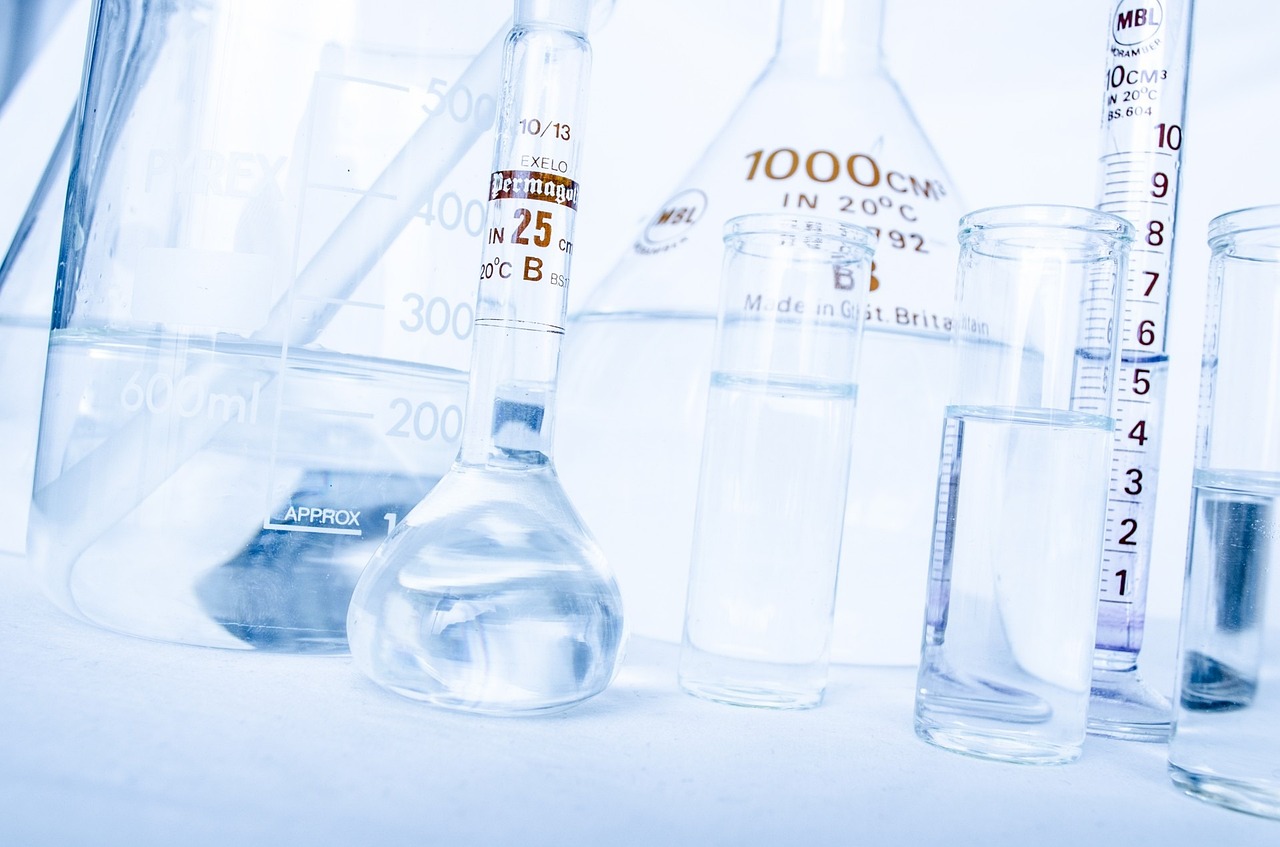>Many students might be looking for Chemistry Paper 1 Topics for revision. To make everything easy for students, we are going to cover paper 1 topics of GCSE Chemistry. This quick revision blog will help you revise important topics for paper 1. Let’s get started:
AQA GCSE Chemistry Specification
Atomic Structure
Atoms
Atoms have small size, i.e. their radius is about 1 × 10-10m. Subatomic particles are in the nucleus called neutrons and protons.
Chemical equations
A chemical reaction can be demonstrated using the word equation: magnesium + oxygen → Magnesium oxide
reactants are placed on the left side and products are placed on the right-hand side. It can also be demonstrated using a symbol equation: 2Mg + O2 → 2MgO
No atoms are made or lost during a chemical reaction so the mass of the products is equivalent to the mass of the reactants.
Separating mixtures
-
- A mixture has two or more substances not combined chemically together. No chemical bonds exist between different substances in the mixture so the substances can be separated easily.
- An insoluble solid can be separated from a liquid using filtration.
- Simple distillation is used for separating and collecting a solvent from a solution.
- Fractional distillation is used for separating miscible liquids with different boiling levels.
- Chromatography is used for separating mixtures of colored dyes.
History of the atom
| Scientist | Date | Atomic Model |
| John Dalton | Start of the 19th century | Atoms were first represented as small solid spheres that could not be divided. |
| JJ Thompson | 1897 | The invention of the electron led to the Plum Pudding Model. This had been said that the atom is a ball of charge with negative electrons contained in it. |
| Ernest Rutherford | 1909 | Alpha scattering experiment denied the plum pudding model. As per the new nuclear model mass is concentrated at the centre (nucleus) and the nucleus is charged positively. |
| Niels Bohr | Around 1911 | Suggested that electrons revolve around the nucleus at specific distances. |
| James Chadwick | Around 1940 | As per evidence, there are neutrons in the nucleus. |
Structure of the atom
It involves atoms, elements, isotopes, relative atomic mass, and electronic structure.
Isotopes
These are atoms with different numbers of neutrons of the same element. It is suggested to go through these AQA GCSE chemistry paper 1 topics.
Electronics structures
Electrons are identified in energy levels. A maximum of two electrons exist in the innermost shell, up to 8 in the second shell and up to 8 in the third shell.
AQA GCSE Periodic Table
Development of the periodic table
Back in the 1800s, scientists tried to arrange elements according to their atomic weights. The early periodic tables weren’t complete because of the absence of some elements and some elements were not in the right group. Gaps were left in the periodic table by Dimitri Mendeleev who modified the order of some of the elements. When preparing for AQA GCSE Chemistry exam, you must know AQA GCSE Chemistry Specification.
The modern periodic table
-
- Elements are organized in the right order
- Elements are organized in columns, called groups
- Elements that are in the same group consist of the same number of electrons
- The rows are known as periods
Group 1 – the alkali metals
The alkali metals are reactive and soft metals. Its atoms have one electron in their outer shell. Group 1 metals conists a low melting point and a low density compared to other metals. They include:
- Lithium
- Sodium
- Potassium
Group 7 – the halogens
The halogens are non-metals. In their outer shell, their atoms have 7 electrons. They include:
- Fluorine
- Chlorine
- Bromine
- Iodine
Structure and Bonding
States of Matter- Solids: the particles in the solid are organized in a common pattern. They have a low amount of kinetic energy. Solids consist of a fixed shape.
- Liquids: the particles in the liquid are organized randomly. The particles can move and have a great amount of kinetic energy.
- Gases: the particles in the liquid are organized randomly. They can be moved very quickly in any direction. Gas particles consist of the highest amount of kinetic energy.
-
Ionic bonding
Ionic bonding exists between non-metal and metal. To become positively charged ions, metal atoms lose electrons. To become negatively charged ions, non-metal atoms gain electrons. Moreover, by revising these chemistry topics, you can score high.
-
-
Covalent bonding
Covalent bonding occurs between non-metals by sharing a pair of electrons between atoms to obtain a full outer shell.
-
-
-
Giant covalent structures
It consists of: diamond, silicon dioxide, graphite, graphene, and polymers.
-
-
- Chemical CalculationsRelative masses and moles
The concepts of relative formula mass and molar mass are quite similar, but they differ in their definitions. Molar mass is the mass of one mole of a substance, while relative formula mass is the mass of a single molecule or formula unit. It is important to note that one mole of a substance contains Avogadro’s number of molecules or formula units.
- Equations and calculations
- From masses to balanced equations
- The yield of a chemical reaction
- Atom economy
- Expressing concentrations
- Titrations
A quantitative analytical method called titration makes it possible to precisely determine whether a solution is alkaline or acidic.
- Titration calculations
- Volumes of gases
Chemical Changes-
The reactivity series
It demonstrates the reactivity of metals with other substances. It is determined by how they create positive ions easily by losing electrons.
-
-
-
Extracting metals
Electrolysis extracts metals if the metal reacts with carbon or if it is reactive to be extracted by reduction with carbon. Large quantities of energy are used during the extraction process to melt the compounds.
-
-
-
Salts from metals
When metals are reacted with acids, they produce salt and hydrogen.
-
-
-
Neutralization and the pH scale
When an acid reacts with an alkali, a neutralization reaction occurs and water and salt are produced. In aqueous solutions, alkalis produce OH– ions and acids produce H+ ions. Neutral solutions are pH7 neither alkalis nor acids.
-
-
-
Strong and weak acids
Strong acids ionize in a solution completely and weak acids partially dissociate.
-
-
Electrolysis
-
Introduction to electrolysis
The process of using electricity to separate an ionic material is called electrolysis.
-
-
-
Changes in the electrodes
-
Electrolysis of aqueous solutions
Electrolysis gases may be released or metals may be deposited at the electrodes. It is based on how reactive each of the elements is.
Energy Changes
-
Exothermic and endothermic reactions
Energy from the reacting substances is transferred to the surroundings during exothermic reactions. Energy is transferred from the surroundings to the reacting substances during endothermic reactions.
-
Reaction profiles
The reactants and products of an exothermic process have higher energy levels. Reactants and products have different energy levels in an endothermic process. Moreover, you must read these Chemistry AQA GCSE specifications to clear your exam.
- Bond energy calculations
You can use bond energy to calculate the change in energy of a chemical reaction.
Conclusion
Now that you know what will be included in AQA Chemistry Paper 1 Topics. For detailed information regarding each concept, you can receive help from our tutors at Bright Mind Tutors.
Other Useful Links:

